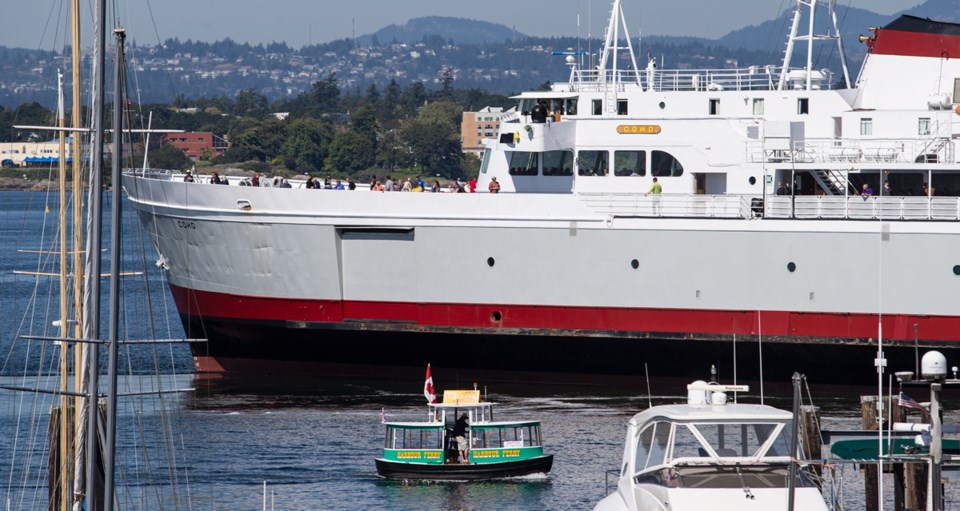Improving on last year’s strong tourism numbers was always going to be difficult, and Victoria’s operators say so far they’re mostly on par with 2018, although hoteliers are anticipating a dip in July.
“How are you going to outperform last year? That would be really hard to repeat,” said Reid James, general manager of the Hotel Grand Pacific. “We all said if we could get the same this year, that would be great.”
Numbers released Tuesday by Chemistry Consulting show hotel occupancy was down slightly through the end of April to 66.34 per cent, compared with 66.52 per cent at the same time last year.
But revenue per available room has increased, jumping $3.86 to an average of $97.86 — a sign of the perceived strength in the industry.
Ryan Malane, vice-president of Black Ball Ferry, which operates the Coho between Victoria and Port Angeles, said this year’s numbers are solid so far.
“Last year was a good year and so far this year, it’s been equal or better, which makes this a very good year.”
Malane said traffic volume was up about five per cent in April, while May was flat compared with last year.
Growth this year has come from an increase of 11.5 per cent in passengers from Oregon, putting Oregon and California, which dropped by eight per cent, in a tie for second place behind Washington state passengers.
“Washington residents are still our largest market by state, and based on our online data, those numbers look like they will be very strong this year,” he said.
B.C. Ferries numbers have also been good so far in 2019 — its busiest route, between Tsawwassen and Swartz Bay, saw a 1.48 per cent increase in vehicle traffic, and a 3.08 per cent increase in passenger traffic.
Victoria International Airport, which this year has been dealing with the grounding of Boeing’s 737 Max fleet and the loss of United Airlines, which stopped its United Express service between Victoria and San Francisco in January, has seen a small decrease in passenger numbers.
Through the end of April, the airport saw 593,638 passengers go through the gates, down from 608,861 for the same period in 2018.
For hotel operators, James said while things look good for the moment, there is some concern about July booking numbers. Individual and family traveller numbers are down, and he’s not sure why.
“This is a bit out of the blue,” he said. “All of the indicators are pretty strong both in Canada and the U.S., so we’re not sure why this is happening.”
James said it might just be that travellers are opting for other destinations in the region.
“[Victoria] can’t win every time,” he said. “We compete with other parts of B.C. and the West Coast and the world. It’s hard to say what’s causing it.”
As in Victoria, tourism indicators in Nanaimo appear to be keeping pace with a strong 2018.
Chemistry’s numbers show average occupancy in Nanaimo hotels at 66.82 per cent, compared with 66.4 through April last year.
The Nanaimo airport showed growth, with a 15 per cent increase in passengers to 136,385 so far this year.
B.C. Ferries reported a 3.1 per cent increase in vehicles and a 4.3 per cent jump in passenger numbers on its Departure Bay-Horseshoe Bay route, and a six per cent jump in vehicle numbers and 5.4 per cent increase in passengers on its Duke Point-to-Tsawwassen route.
“The early-season numbers are good,” said Anthony Everett, chief executive of Tourism Vancouver Island.
Everett said given the economic situation around the world, he expected a flat 2019, but “that’s not what we’re seeing on the Island or anywhere in the province, for that matter.”
Everett also said international visitation has started earlier than usual.



